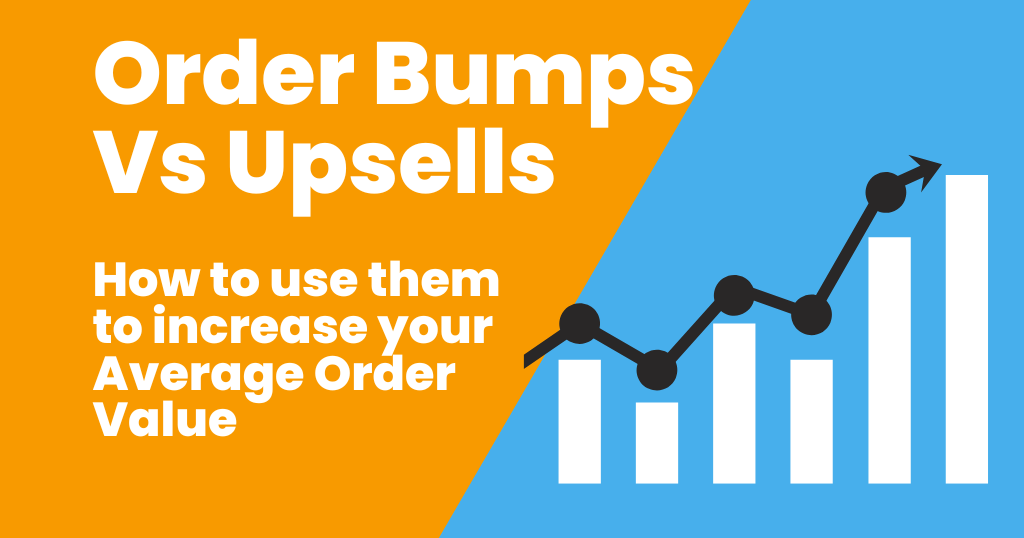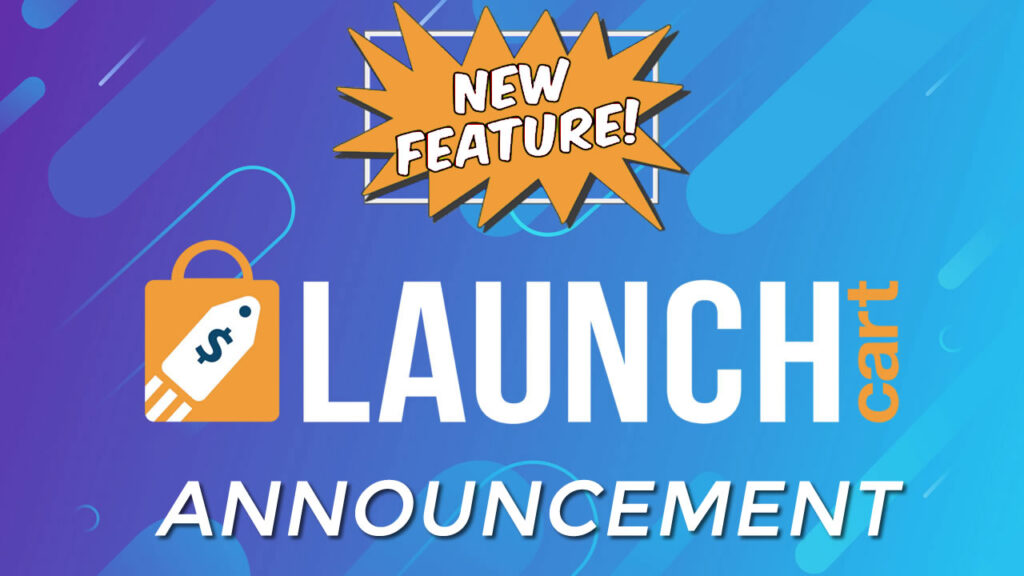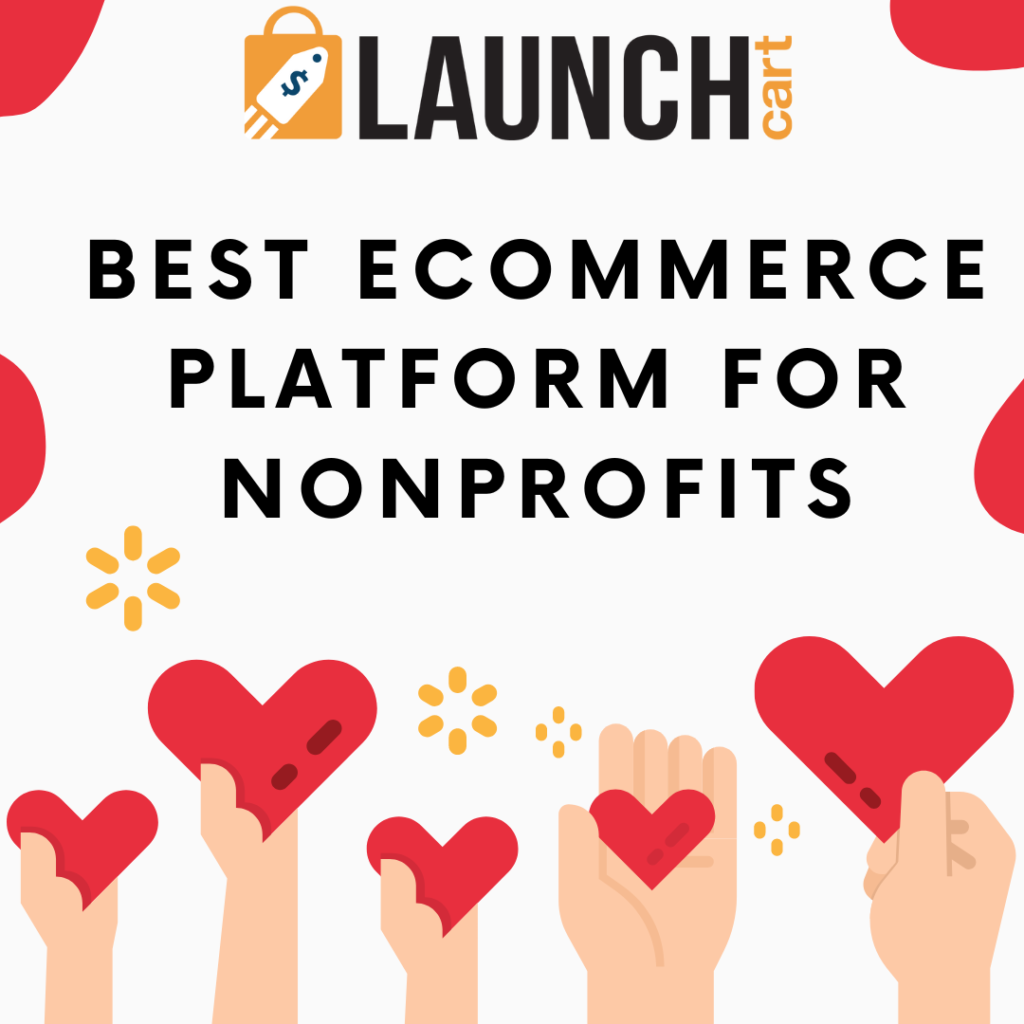If you’re running an eCommerce business, then you’ll know that increasing your average order value is key to having a successful online business.
Two popular methods are using order bumps and upsells. However, people often misunderstand and confuse these two tools.
In this article, we explain the difference between the two, and which one is right for your business.
What Is An Order Bump
An order bump is a special offer that is presented to a customer just before they complete the payment at checkout. Order bumps are typically small items or add-ons that can be simply added to an order.
They are intended to be impulse purchases and can make a big difference to your average order value and the profit you make from the customer.
By way of example, let’s say you’re selling phone cases, an order bump might be an offer of a screen protector for just $5.
The key with order bumps is that they must be relevant to the product that the customer is already buying. If they’re not, then chances are the customer will just ignore the offer. Additionally, order bumps should be priced low enough that they seem like a no-brainer purchase.
After all, if the customer is already buying a phone case from you, then they’re likely to be open to purchasing a related product like a screen protector.
Ecommerce platforms like Launch Cart, Shopify, or SaleHoo have made it easy for eCommerce store owners to add order bumps to their checkout pages so you can take advantage of this approach.
What Is An Upsell
Upsells, on the other hand, are offers presented to the customer after the customer has already made their purchase. They are usually more expensive than the product that the customer has bought and therefore need to have a higher perceived value.
For example, let’s say someone buys a screen protector for their phone for $10. After their purchase is complete, you could upsell them on a phone case for $25. Ideally, this should be offered on a one-click basis to make it easy for the customer to buy the additional item. Its important to take any friction out of the process. Luckily the Launch Cart upsell functionality does exactly that.
If an upsell offer is rejected, then there is the option of offering a downsell. Downsells are cheaper alternative products to the original upsell, but again should be related to the original purchase.
One can have many upsells and downsells in the funnel, but its important not to frustrate or annoy your customer as you want them to return to purchase from you in the future.
Be Clear On The Differences
Both order bumps and upsells can be effective ways to increase your AOV. However, it’s important to understand the difference between the two before deciding which one is right for your business. Order bumps should be highly relevant to the product being purchased and priced low enough to seem like a no-brainer purchase.
Upsells, on the other hand, are often of higher quality and price than the original product and should complement it in some way. By understanding these differences, you can choose the method (or methods) that are right for your business and start increasing your AOV!
How To Price An Order Bump
Order bumps are designed to increase average order value by enticing customers with an additional product that they may be interested in.
When pricing an order bump, you should consider the value of the additional product and how it will benefit the customer. You should also make sure that the price is not too high or too low, as this could deter customers from taking advantage of the order bump.
How To Price An Upsell
In order to price a one-click upsell, you need to consider the perceived value of the upsell to your customer. You also need to take into account what the average customer is willing to pay for your product or service.
Additionally, you need to factor in the cost of goods sold (COGS) associated with the upsell option. Most importantly, you must ensure that your upsell provides enough value to justify your price and if you are offering a significant discount, make sure you are still making a profit on the sale.
The Psychology Behind Order Bumps
There are several psychological factors at play when it comes to order bumps. The first is the principle of sunk cost fallacy. This is the idea that we are more likely to continue investing in something as long as we have already invested in it.
For example, if we have already spent $50 on a piece of clothing, we are more likely to spend an additional $5 to get it shipped than if we had only spent $5 on the clothing in the first place.
The second psychological factor is loss aversion. This is the idea that we are more motivated by avoiding losses than by achieving gains. In other words, we would rather not lose $5 than gain $5. This is why order bumps are often presented as discounts or free shipping offers.
By framing the order bump as a “loss”, businesses are able to tap into our natural aversion to losses and increase the likelihood that we add the item to our basket by hitting add to cart or ticking the checkbox.
Why I Use Order Bumps and Upsells
When selling a t-shirt, the margins aren’t great especially once you take into account the cost of running ads on platforms like Facebook or Instagram.
If you’ve managed to get a customer from an advert to your site and then through to the checkout you should look to maximize the profit you get from that customer. You’ve already paid for the acquisition of that customer so you need to get them to spend more by offering them great value in the form of an upsell and order bump.
If you are using print on demand, selling a mug at a discounted price that is still above what it costs you as the buyer increases the total profit in $ for that order. So why wouldn’t you?
Once you find an upsell page format that works or an order bump that converts, save it in a document as a template to be used next time.
Wrap Up
Upsells and order bumps are tools that every online store owner should be using. Get them right and your only problem will be managing to fulfill all these orders. Luckily Launch Cart includes this functionality without the need for costly additional apps.
With the Launch Cart free plan you can sign up and test them out for yourself at no additional cost. If you then decide you like the platform you can upgrade to a paid plan with lots of additional features.
FAQ
Down Sell Vs Upsell - What Is The Difference
The terms upsell and downsell are often used interchangeably, but there is a difference between the two. Upselling is when a seller tries to convince a buyer to purchase a more expensive product or upgrade to a higher level of service.
Downselling, on the other hand, is when a seller tries to convince a buyer to purchase a less expensive product or downgrade to a lower level of service.









